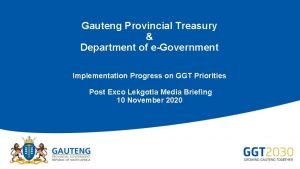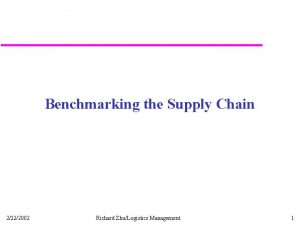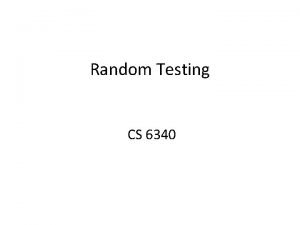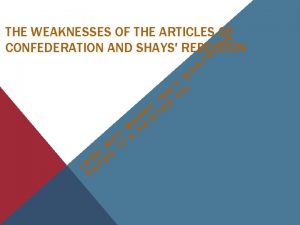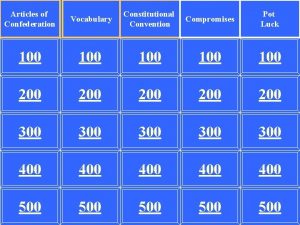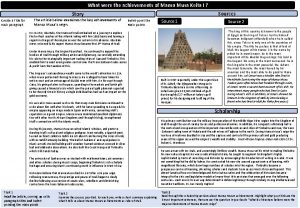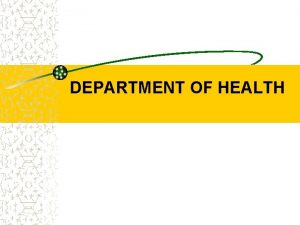RESEARCH ACHIEVEMENTS FUTURE RESEARCH PRIORITIES Director of Research


























































- Slides: 58

RESEARCH ACHIEVEMENTS FUTURE RESEARCH PRIORITIES Director of Research CSK HP Krishi Vishvavidyalaya Palampur – 176062 (H. P. )

Monthly rainfall during Kharif 2018 as compared to Kharif 2017 in Himachal Pradesh Month June July August September Seasonal total Actual (mm) 2017 124. 1 216. 7 273. 3 105. 7 719. 8 2018 120. 0 240. 1 297. 1 269. 8 927. 0 Normal 99. 3 311. 1 290. 8 142. 4 843. 6 Departure (%) from normal 2017 +25 -30 -6 -26 -15 2018 +21 -23 +2 +89 +10

2017 2018 Normal 350 Rainfall (mm) 300 250 200 150 100 50 0 June July August Months September

2017 2018 Departure (%) 10 0 June July August -10 -20 -30 -40 Months September

FResearch Programme Areas üCrop Improvement üCrop Production üCrop Protection üProtected Cultivation üOrganic and Natural Farming

RESEARCH HIGHLIGHTS

CROP IMPROVEMENT

New Fodder Variety Setaria grass S-25 Identified during National Group Meeting of AICRP on Forage Crops held at IGKV, Raipur w. e. f. 26 -27 Feb, 2019 for sowing/planting in grasslands and pastures under mid and low hill areas of Himachal Pradesh and Uttarakhand § Suitable for grazing as well as cut and carry system § Average Green fodder yield = 700 -800 q/ha in 3 to 4 cuttings § Crude protein content = 7. 6 – 8. 7%

Promisingle cross maize hybrids to be inducted in AICRP during Kharif 2019 KMH-18 -83 KMH-18 -145 PAC-740

Promisingle cross maize hybrids inducted in AICRP during Kharif 2018 KMH-16 -25 KMH-16 -29 KMH-16 -40 PALAM SHANKAR MAKKA-2

Use of Doubled Haploid Technology in Maize Doubled Haploid (DH) techniques through inducer inbreds for developing maize inbred lines. DH is an alternative approach which shortens the breeding cycle of 9 -10 years to 2 -3 generations for the development of completely homozygous inbred lines.

FEVALUAION OF MAIZE HYBRIDS

Performance of Private Hybrids (Kharif 2018) @MAIZE • EVALUATED 13 maize hybrids with two checks : Palam Shankar Makka 2 and Bio 9544 at six different locations of University • On the basis of two years evaluation, hybrid HP 333 (Gold) was found suitable for cultivation in Zone-I and Zone-II. • Other hybrids which performed well in different zones during the year 2018, need second year evaluation to draw inference of their suitability in any of the zone of the state.

Mean performance of maize hybrids for seed yield (q/ha) over locations in HP during Kharif 2018 Hybrid Vyaas Super 9396 HP 333 (Gold) SMS-137 PSC 4445 B-52 Super Bio 9544 ( C) NMH 1277(Baaz) Seed Company/ Institution ZONE II Aruna Seeds Pvt. Ltd. 96. 25 84. 41 Super Seed Company 65. 53 65. 50 Proline Seeds Company 77. 55 78. 89 ( India) Pvt. Ltd. Super Seed Company 81. 88 80. 67 Proline Seeds Company 84. 18 61. 63 ( India) Pvt. Ltd. Aruna Seeds Pvt. Ltd. 90. 19 68. 19 90. 35 69. 24 Nuziveedu Seeds Ltd. 84. 07 81. 56

Mean performance of maize hybrids for seed yield (q/ha) over locations in HP during Kharif 2018 Hybrid GX 888 PG-2500 (LAALI) Palam Sankar Makka-2 (C) B-52 Gold PSC-3322 (Gold) DKC 8181 Vyaas Gold Seed Company/Institution ZONE II Galaxie Genetics INC. 73. 77 64. 70 Plant Gene Seeds LLP 50. 94 53. 21 Kanchan Ganga Seed Company Proline Seeds Company ( India) Pvt. Ltd. Monsanto India Ltd. Kanchan Ganga Seed Company 81. 10 79. 94 77. 84 75. 15 95. 42 74. 68 90. 61 94. 55 83. 92 76. 88

Performance of Private Hybrids (Kharif 2018) @RICE • EVALUATED 3 rice hybrids with three checks : BS 10008, ARIZE 6129 Gold and Arize Swift Gold at five different locations. • Sava 127 and Sava 200 were found suitable for commercial cultivation in ZONE-I and ZONE-II, respectively.

Mean performance of rice hybrids for seed yield (q/ha) over locations in HP during Kharif 2018 ZONE II M/s Maharashtra Hybrid Seed Co. Pvt Ltd 40. 99 66. 60 ARIZE 6129 GOLD (C) M/s Bayer India Pvt. Ltd. 47. 68 69. 37 Sava 127 M/s Savannah Seeds Pvt. Ltd. AZ 6508 (BS 10008) (C) M/s Bayer India Pvt. Ltd. 44. 12 59. 76 48. 10 62. 01 ARIZE SWIFT GOLD M/s Bayer India Pvt. Ltd. (C) 41. 46 62. 50 Sava 200 37. 85 56. 37 Name of the Hybrid MRP 5632 Source M/s Savannah Seeds Pvt. Ltd.

FSeed Production

@ Quality Seed Produced during Kharif 2018 Type of Seed Total seed produced (q) Nucleus seed 7. 52 Breeder seed 142. 78 Foundation seed 81. 20 Total 231. 50

Breeder seed produced during Kharif 2018 Crop Breeder seed (q) Cereals 50. 16 Pulses 36. 30 Oilseeds 53. 52 Fodder 2. 80 Total 142. 78

Foundation seed produced during Kharif 2018 Crop Foundation seed (q) Cereals 7. 20 Pulses 46. 39 Oilseeds 25. 67 Vegetables 1. 94 Total 81. 20

CROP PRODUCTION

FEVALUATION OF ALTERNATIVE CROPPING SYSTEMS § Based on the mean of four years, rice-palakcucumber and okra-radish-onion gave significantly higher rice grain equivalent yield (RGEY) of 207. 4 q/ ha and 201. 4 q/ha, respectively. § These two cropping systems also gave significantly highest net returns of Rs. 1, 39, 845/ha and Rs. 1, 01, 335/ha.

NUTRIENT AND WATER MANAGEMENT

• In the long-term experiment, it was found that integrated use of NPK fertilizers and farmyard manure recorded the highest yield of maize (46 q/ha). • Continuous application of zinc @ 5. 0 kg ha-1 from the last 5 years resulted in highest maize grain and stover yield.

• The highest fruit yield of tomato was recorded with the soil application of boron @ 2. 0 kg ha-1. • The foliar spray of 0. 051% B through boron calcium metalosate recorded highest grain and stover yield of maize crop in comparison to other boron sources.

• Prescription based fertilizer application in maize was superior over general recommended dose, soil test based fertilizer application and farmers’ practice w. r. t the grain, stover yield and N, P and K uptake in maize during kharif 2018 Maize experiment

Water Management • The water assessment study of KC kuhl from 2014 -2018 indicated that the villages at head end i. e. Neugal Khad, Bandla and Kalibari mandir had water availability in kuhl round the year where as the villages like Maranda and Bhwarana at middle of kuhl had water availability from January to September. The village at tail end i. e. Garh road had water availability in April, May and August and rest of the months remained drier. Mud plastering of village pond at Village Chadhiar reduced the percolation losses from 23 -25 mm/day to 5 -6 mm/day

CROP PROTECTION

Occurrence of diseases in polyhouses ØPhytophthora capsici and Sclerotinia sclerotiorum found to be associated with Capsicum. ØPythium ultimum, Rhizoctonia solani, Fusarium oxysporum, Sclerotium rolfsii found to be associated with Tomato. Collar rot Root rot

Antagonistic activity of different bio-agents against soil borne pathogens: q. Among the five Trichoderma isolates, the isolate TV-1 resulted in maximum mycelial inhibition against Phytophthora capsici (59. 26 %), Fusarium oxysporum (88. 88%) and Rhizoctonia solani (81. 55%), respectively. q. SMA-5 causing maximum mycelial inhibition against Pythium ultimum (63. 00%) and Sclerotium rolfsii (54. 07%) and DMA-4 against Sclerotinia sclerotiorum (74. 82%). q. The isolates TV-1 and SMA-5 were found to be most effective against all pathogens resulting in significant mycelial growth inhibition.

a b c d Fig 1: Antagonistic activity of Trichoderma against Pythium ultimum(a. ), Fusarium oxysporum (b)Phytophthora capsici (c) and Rhizoctonia solani (d) a a b Fig 2: Mycoparasitic activity of Trichoderma on mycelium of Rhizoctonia solani (a&b) and Sclerotinia

Protocol for mass-multiplication of Trichoderma Prepare Potato dextrose broth / boil the agri substrates The substrates are inoculated with pure culture of Trichoderma species and are kept for incubation Homogenise the broth / grind the substrate and filter through mesh and mix with the talc powder. Let the talc based formulation for air dry overnight Evaluation of substrates for mass multiplication

Management of zonate leaf spot of sorghum Seed treatment with carbendazim @ 2 g/kg seed followed by two sprays of propiconazole @1 ml/l at 15 days interval decreased the disease severity by 75. 9% over control. This treatment produced 14. 4% more green fodder yield than control i. e. 336 q/ha against 322 q/ha in control Treated Control

Integrated disease management of BLSB of fodder maize • Seed treatment with carbendazim @ 2 g/kg seed followed by two foliar sprays of tryfloxystrobin + tebuconazole @1 g/l at 15 days interval reduced disease severity by 69. 2% over control with 10. 6% increase in GFY yield (382. 3 q/ha) over check (349 q/ha) BSLB

FARM MECHANIZATION

a a. Front and central view of garlic planter b. Modified spoons of garlic planter b

Garlic sowing by garlic planter and by conventional method

FOrganic and Natural Farming

FOrganic and Natural Farming FAt Dhaulakuan, Rice varieties Pusa 1121 and HPR 2795 (Red rice) under zero budget natural farming practices yielded to the tune of 19 and 17 q/ha, respectively. FOrganic manures viz. Biogold and PROM (Phosphate Rich Organic Manure) from the Narmada Bio-Chem Ltd. were tested in maize and it was observed that Biogold 375 kg/ha and PROM 500 kg/ha being at par with each other produced as good maize yields as the recommended organic practice. FAt Dhaulakuan, the yield of black gram (Him Mash-1) under zero budget natural farming practices was 5. 5

FOrganic and Natural Farming üApplication of Jeevamrit in black gram and soybean under Zero Budget Natural Farming conditions gave encouraging results and produced 85. 0 & 45. 2 % higher yields over control, respectively. üThe highest yield of blackgram (8 q/ha) was observed under Integrated nutrient management practices as compared to jeevaamrit at 15 and 30 days interval (7 and 6 q/ha). üIn organic management trial, the highest black gram yield (9. 45 q/ha) was recorded with stale seed bed preparation + reduced spacing + weed straw mulching + one hand weeding at 20 days after sowing.

Natural Farming Evaluation of different inputs including zero budget natural farming on yield of black gram (kharif 2018) Sr. No. Treatment Yield (q/ha) 1 Soil application of Jeevamrit at 15 days 7. 73 interval 2 Soil application of Jeevamrit at 30 days interval 6. 51 3 FYM alone 6. 80 4 NPK alone 7. 23 5 Soil Test Based Fertilizers 7. 82 6 50: 50 (Integrated) 8. 14 7 Farmers’ Practice (40% of recommended NPK) 6. 62 8 Absolute control 5. 01 CD (5%) 1. 12

Socio-Economic Studies

FCost and returns of kharif vegetables in Nagrota Bagwan (Kangra District) (Rs. /ha) Sr. No. Particulars Okra Brinjal Cucumber Bottle gourd Bitter gourd 1. 2. 3. 4. 5. i) iii) Cost A (A 2) Cost B (B 2) Cost C (C 3) Gross returns Net returns over Cost A 2 Cost B 2 Cost C 3 90634 96334 158976 215280 67334 72098 122456 177370 86729 92422 147864 217500 53762 57467 106114 168800 68047 73194 116813 155750 124637 118946 56304 110035 105272 54913 130771 125078 69636 115038 111333 62686 87703 82556 38937 6. Output-Input ratio (over Cost C 3) 1. 35 1. 45 1. 50 1. 60 1. 33

FRelevance of crop diversification: Response of sample households (Number) Sr. No. Particulars 1. Increase in economic status Small 17 (54. 84) Large 20 (68. 97) Overall 37 (61. 37) 2. Increase in social status 11 (35. 48) 15 (51. 72) 26 (43. 33) 3. Job seeker to job giver 5 (16. 13) 4 (13. 79) 9 (15. 00) 4. Nutritional security 30 (96. 77) 28 (96. 55) 58 (96. 67) 5. Supplier of seed and planting material 2 (6. 45) 2 (6. 90) 4 (6. 67) Note: Figures in parentheses indicate multiple percentages.

FUse of incremental income by farmers from diversification project (Per cent response) Sr. Particulars No. 1. 2. 3. 4. Food consumption Education Health care Agriculture and allied sector 5. Others (transportation, social function) Small Large Overall 10. 32 12. 10 13. 39 50. 97 12. 59 14. 14 11. 03 49. 66 11. 45 13. 12 12. 21 50. 31 13. 23 12. 59 12. 91

FFuture Research Priorities Natural Farming Ø Development & standardization of production and protection technologies for different crops under natural farming. Ø Evaluation of the quality of dung and urine of Pahadi desi, Sahiwal, mixed breed and Jersy cows w. r. t. the microbial population and nutrient status Ø Comparative economics of Natural Farming, organic farming and inorganic farming Ø To enhance capacity building under Natural Farming.

FFuture Research Priorities Protected Cultivation Ø Standardization of production technology of important vegetable crops for protected environments Ø Development of horticulturally desirable hybrids of tomato, bell pepper, chilli, cauliflower, cabbage, broccoli and cucumber by using different genetic mechanisms for open and protected conditions.

FFuture Research Priorities Crop Improvement Ø Speedy and Precision Crop Breeding by employing modern plant breeding approaches (e. g. Doubled Haploidy Breeding, Chromosome Engineering & Molecular Breeding) for developing climate resilient crop varieties in north-western Himalayas. Ø Risk efficient plan to tackle the outbreak of dreaded diseases like yellow rust in wheat and neck blast in rice by pyramiding of genes from diverse sources. Ø Development of hybrids in maize and rice by utilizing Himalayan gene-pools. Ø Biofortification in wheat, rice and maize for Zn and Fe content using molecular breeding approaches.

FFuture Research Priorities Crop Improvement ØSpecial attention to pulses and oilseeds improvement in the hills e. g. introgression of ascochyta & fusarium resistance and drought & cold tolerance in chickpea, anthracnose and angular leaf spot resistance in rajmash, cercospora resistance in urdbean and development of varieties for intercropping, alternaria resistance in brassicas and phytophthora & blight resistance in sesame. ØFocus on temperate grasses especially Tall Fescue and Rye Grass for improving persistency, regenerability and quality.

FFuture Research Priorities Agricultural Biotechnology Ø Identification and functional characterization of neck blast resistance genes Ø Development of blast and bacterial blight resistant versions of the elite rice varieties of the state through marker assisted backcross breeding. Ø Development of dwarf and early maturing plant type of hosregram suited to low input agriculture. Ø Elucidation of mechanisms of cold tolerance in chickpea and development of cold tolerant varieties for northern region of India

FFuture Research Priorities Crop Production ØSite specific management of different crops in integrated farming system along with strategies for rainfed agriculture. ØCrop weather interaction and crop weather pest/disease relationships studies. ØSoil health assessment and management strategies for different agro -climatic zones of Himachal Pradesh, ØDevelopment of IPNS based fertilizer prescription equations for major crops and soils of Himachal Pradesh, ØPrecise irrigation and fertigation scheduling under open and protected conditions, ØLand resource surveys on watershed basis for sustainable hill agriculture, ØNano- technological interventions for enhancing nutrient use efficiencies

FFuture Research Priorities Crop Protection ØDevelopment of forecasting models for major insect-pests suitable for precision farming ØDevising integrated pest management technology for major insectpest and nematode pests under open as well as protected conditions ØDeveloping strategies for insect-pest management under organic and natural farming situations ØAssessment of insecticide residues in different vegetables to work out their safety intervals ØMolecular insect systematic for authentic insect-pest identification ØIdentification and utilization of local entomopathogens in integrated pest management.

FFuture Research Priorities Crop Protection ØIdentification of resistance sources/ genes against major diseases of field and vegetable crops ØMonitoring of virulence structure of potential plant pathogens in space & time ØEmphasis on eco-friendly management of plant diseases under integrated disease management ØSurvey & surveillance for recording the occurrence and status of diseases under changing climatic conditions and prioritization of research on major emerging issues

FFuture Research Priorities Vegetable Crops Ø Development of high yielding, horticulturally desirable and disease resistant varieties of important vegetable crops. Ø Collection, evaluation, maintenance and conservation of germplasm of different vegetable crops. Ø Nucleus and breeder seed production of different released varieties.

FFuture Research Priorities Farm Mechanization Ø Evaluation of Garlic Planter for cultivation of garlic. Ø Collection of strength parameters of agricultural workers in Himachal Pradesh. Ø Construction and Evaluation of dry fermentation based 5 m 3 biogas plant. Ø Demonstration and ORP of solar gadgets and improved cook stove.

FOn Going Research Projects Particulars ICAR Funded Projects DBT Funded Project DST Funded Projects CSIR Funded Project Miscellaneous Ad-hoc Projects RKVY Projects (including R-ABI) Total No. of Projects 11 09 15 01 49 Budget Outlay (in Rs. lakhs) 222. 58 364. 13 545. 52 26. 86 993. 38 11 438. 00 96 2590. 47

 Future continuous future perfect
Future continuous future perfect Future perfect simple continuous
Future perfect simple continuous Present perfect future tense
Present perfect future tense Present past future simple
Present past future simple See future continuous
See future continuous Future nurse future midwife
Future nurse future midwife Present continuous in future
Present continuous in future Future plans present continuous
Future plans present continuous Tense chart in english
Tense chart in english Future plans and finished future actions
Future plans and finished future actions Future perfect and future continuous
Future perfect and future continuous 1 2 3 kondicional u engleskom jeziku
1 2 3 kondicional u engleskom jeziku Volkswagen case study ppt
Volkswagen case study ppt National core standards 2021
National core standards 2021 Patrol base definition
Patrol base definition Wilderness survival rule of 3
Wilderness survival rule of 3 Ggt 2030 education
Ggt 2030 education Defense priorities and allocations system
Defense priorities and allocations system Healthy vs unhealthy sibling relationships
Healthy vs unhealthy sibling relationships Core priorities
Core priorities Wood badge ticket vision examples
Wood badge ticket vision examples 6 quality priorities
6 quality priorities Core priorities
Core priorities Solution
Solution Cross curricular priorities
Cross curricular priorities Preferred priorities for care
Preferred priorities for care Goals and priorities
Goals and priorities Goals and priorities
Goals and priorities Goals and priorities
Goals and priorities Goals and priorities
Goals and priorities Priorities
Priorities Supplier and distributor benchmarking
Supplier and distributor benchmarking Thread priorities
Thread priorities Mixed priorities
Mixed priorities Www.xkcd.com
Www.xkcd.com Zhou dynasty facts
Zhou dynasty facts Patient care experience
Patient care experience Achievements of the articles of confederation
Achievements of the articles of confederation Han dynasty achievements
Han dynasty achievements Roman engineering achievements
Roman engineering achievements Tesla secret master plan
Tesla secret master plan Lesson 8 the articles of confederation
Lesson 8 the articles of confederation What is ifrs
What is ifrs Hwang ho civilization
Hwang ho civilization Achievements of aristotle
Achievements of aristotle Henry hudson accomplishments
Henry hudson accomplishments Henry hudson obstacles
Henry hudson obstacles Achievements of the articles of confederation
Achievements of the articles of confederation Ramses
Ramses Zhou dynasty achievements
Zhou dynasty achievements Achievements of the articles of confederation
Achievements of the articles of confederation Renaissance vs medieval
Renaissance vs medieval Mayan
Mayan Pantheon
Pantheon Han dynasty achievements
Han dynasty achievements What were the major achievements of the shang dynasty
What were the major achievements of the shang dynasty What were mansa musa's most important achievements
What were mansa musa's most important achievements Improvement in telegraphy1876
Improvement in telegraphy1876 What languages come from latin
What languages come from latin
















